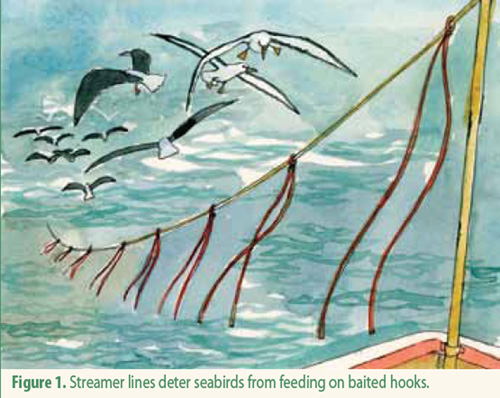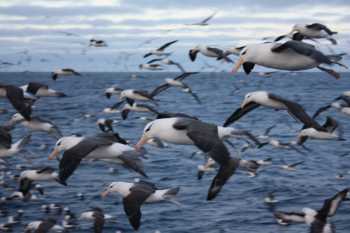Jenn Lavers (Institute for Marine and Antarctic Studies, University of Tasmania, Australia) has published in the ICES Journal of Marine Science on Flesh-footed Shearwaters Puffinus carneipes in South and Western Australia.
The paper’s abstract follows:
“Seabirds are considered reliable indicators of the marine environment due to their reliance on ocean-based resources and position at the top of the marine foodweb. The status of the world’s bird populations have deteriorated over the past 20 years with seabirds declining faster than any other bird group. For some seabird species, a lack of data or synthesis of available data limits our ability to detect changes in population trends and gain insight into the condition of the surrounding marine environment. The Flesh-footed Shearwater (FFSH; Puffinus carneipes) exemplifies this with demographic and count data either absent or outdated for most breeding islands. Results of a survey of 20 FFSH breeding islands in South and Western Australia during 2011–2014, and a synthesis of all available data indicate the current global population is substantially smaller than previously thought, comprising no more than 74 000 breeding pairs. While much of the reduction in numbers is due to outdated burrow counts which are shown to be a poor measure of population size in this species, there is evidence of a decline in numbers on at least six islands that account for ~ 40% of the world’s population. A review of novel and existing data on FFSH breeding habits (burrow occupancy and density), concurrent threats, and population size in South and Western Australia are presented here along with priorities for management of this declining marine predator.”

Flesh-footed Shearwater, photograph by Barry Baker
With thanks to Barry Baker.
Reference:
Lavers, J.L. 2014. Population status and threats to Flesh-footed Shearwaters (Puffinus carneipes) in South and Western Australia. ICES Journal of Marine Science doi: 10.1093/icesjms/fsu164. (+ supplementary data).
John Cooper, ACAP Information Officer, 09 October 2014

 English
English  Français
Français  Español
Español 


